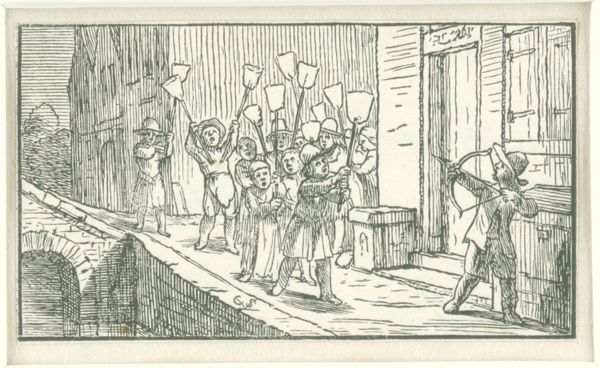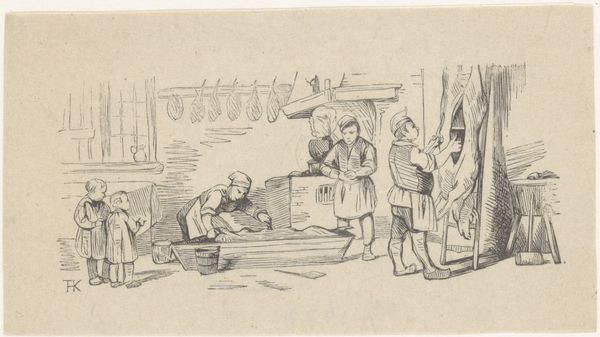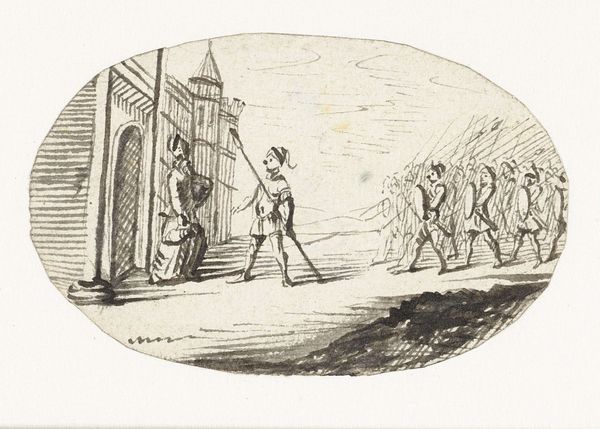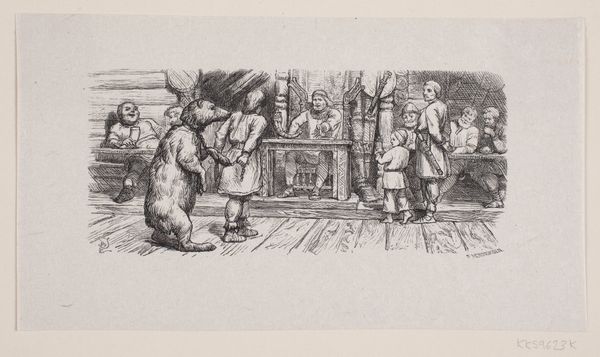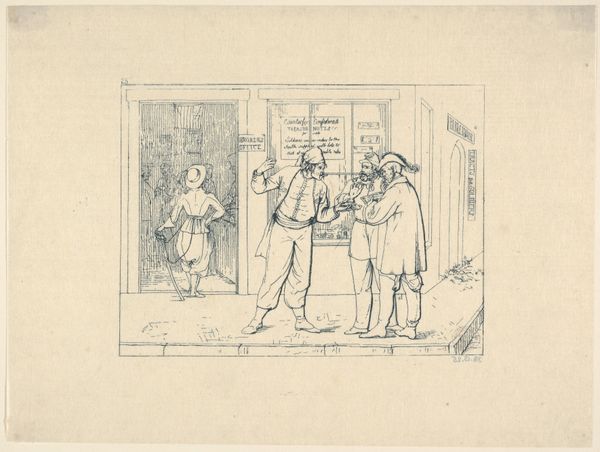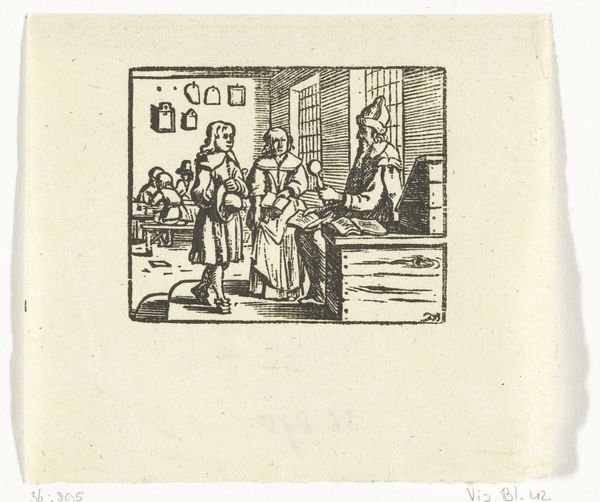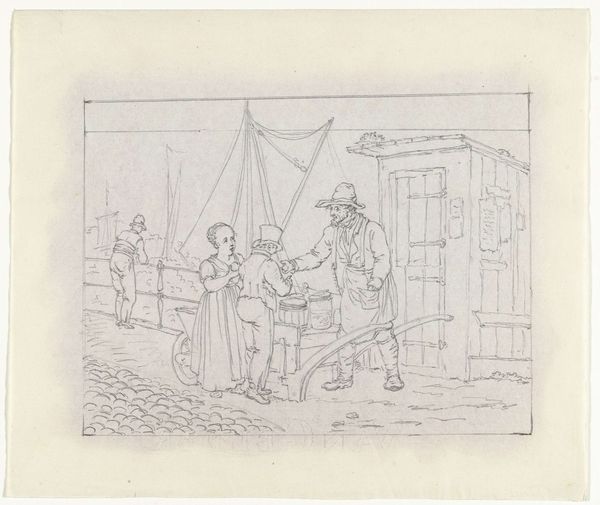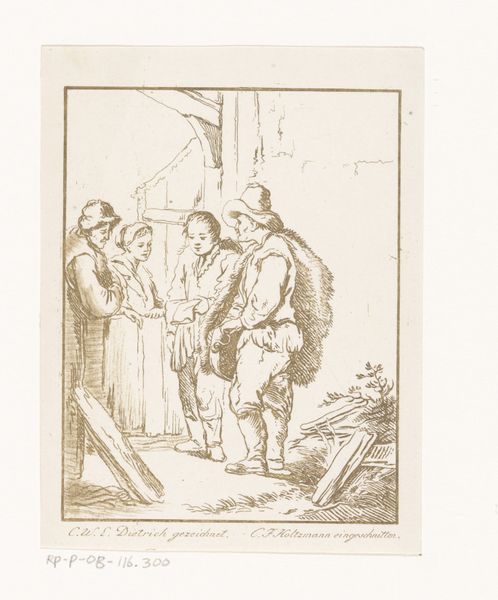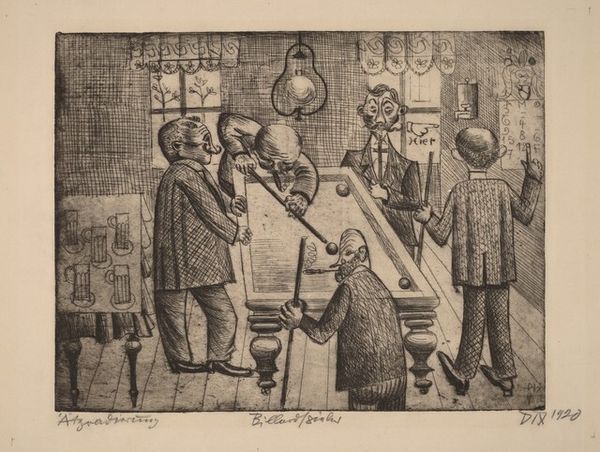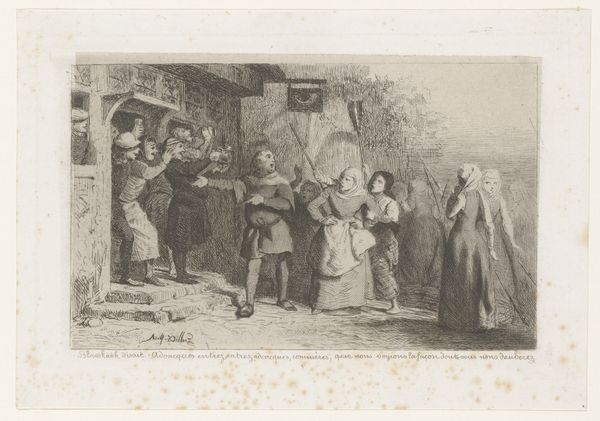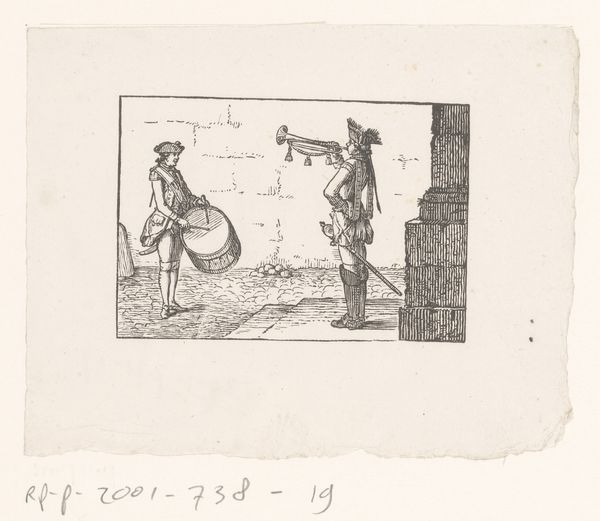
print, engraving
#
narrative-art
#
baroque
#
dutch-golden-age
# print
#
pen illustration
#
old engraving style
#
figuration
#
ink line art
#
genre-painting
#
engraving
Dimensions: height 64 mm, width 112 mm
Copyright: Rijks Museum: Open Domain
Editor: Here we have Dirck de Bray's "Januari," an engraving made sometime between 1635 and 1694. The stark black and white of the print gives it a real sense of immediacy, like a news illustration. What story do you think it's trying to tell? Curator: This image speaks to me of communal ritual and performative social structures. It evokes questions of belonging and exclusion, who is allowed to participate, and what the symbolism represented meant to 17th-century Dutch society. Think about the group dynamic: those gathered in the doorway versus those in the street. Who holds the power? Editor: I hadn't really considered it as a question of power before. The figures in the doorway do seem more reserved. Maybe they are higher in social class? Curator: Exactly! Consider the context: genre painting gained prominence in the Dutch Golden Age. Everyday scenes became vehicles for exploring morality, social commentary, and even political undertones. Are we looking at a depiction of genuine community celebration, or is there a subtle critique embedded within? What does "Januari" mean for the people shown and their own experience and identity within their society? Editor: It’s amazing how a seemingly simple scene can reflect so many layers of social dynamics. So the choice of representing this custom in art says something about Dutch society at the time? Curator: Precisely! And by analyzing this print, we can excavate those hidden narratives and challenge dominant interpretations of history. It’s a powerful reminder that art can be a potent tool for understanding the complexities of human experience. Editor: That’s a really fascinating perspective. I will look at art differently from now on!
Comments
No comments
Be the first to comment and join the conversation on the ultimate creative platform.

